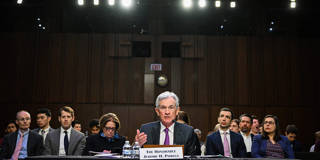Despite signs that inflation in most major economies has peaked and is trending back down, recent data releases have renewed fears that central banks will have to tighten monetary policy still further. In the face of maddeningly mixed signals, much will depend on a few key factors.
LONDON – In January, I expressed optimism that a recession across the Western world (and beyond) was becoming less likely, and high-frequency indicators since then have indeed supported a benign outlook. This is especially true in the United States and China, now that it has reopened, but it also applies to continental Europe, the United Kingdom (to a more modest degree), and many developing and emerging economies.
Yet despite recent positive signs, several new sources of uncertainty have presented themselves. First, the evidence for a sustained downward trend in inflation has weakened both in the US and Europe, leading central bankers to warn that they may need to resume rapid monetary-policy tightening. US Federal Reserve Chair Jerome Powell has just told Congress that, after having reduced the size of its last interest-rate increase from 50 basis points to 25, the Fed may need to return to larger hikes. Given US monetary policy’s central importance in the global economy, such changes are no small matter.
Financial markets have duly swooned, with short-term interest-rate expectations moving sharply upward. Markets now expect the Fed to raise rates above 5%, and some observers even anticipate a rise toward 6%. Either way, investors will have to navigate many more hurdles for many years to come, including in equities.

LONDON – In January, I expressed optimism that a recession across the Western world (and beyond) was becoming less likely, and high-frequency indicators since then have indeed supported a benign outlook. This is especially true in the United States and China, now that it has reopened, but it also applies to continental Europe, the United Kingdom (to a more modest degree), and many developing and emerging economies.
Yet despite recent positive signs, several new sources of uncertainty have presented themselves. First, the evidence for a sustained downward trend in inflation has weakened both in the US and Europe, leading central bankers to warn that they may need to resume rapid monetary-policy tightening. US Federal Reserve Chair Jerome Powell has just told Congress that, after having reduced the size of its last interest-rate increase from 50 basis points to 25, the Fed may need to return to larger hikes. Given US monetary policy’s central importance in the global economy, such changes are no small matter.
Financial markets have duly swooned, with short-term interest-rate expectations moving sharply upward. Markets now expect the Fed to raise rates above 5%, and some observers even anticipate a rise toward 6%. Either way, investors will have to navigate many more hurdles for many years to come, including in equities.